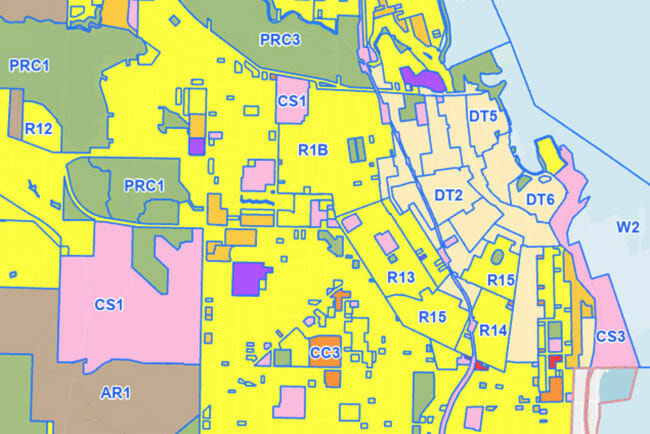BY PRIYEN DESAI
In the realm of urban planning, the term ‘zoning’ often invokes images of bureaucratic red tape, restrictive regulations, and stifled development. Our cities have been plagued by reactive zoning, a chaotic dance of approvals and delays that stifles progress and fuels uncertainty. As cities grapple with the challenges of rapid urbanization, housing shortages, and environmental sustainability, a new approach to zoning is needed – one that promises to shape our communities for the better: pre-zoning. By establishing clear and transparent land-use designations in advance, it lays the groundwork for predictable, efficient development.
Pre-zoning involves the designation of land uses and development standards in anticipation of future growth and development. Unlike traditional reactive zoning, which responds to development proposals on a case-by-case basis, pre-zoning establishes clear guidelines and expectations up front. Think of it like a well-defined roadmap, guiding investors, developers, and communities toward a shared vision. Businesses gain long-term certainty, allowing them to invest confidently. Communities know what to expect, ensuring their voices are heard throughout the process. And cities can finally move from reactionary to proactive planning, shaping their own destinies.
Moreover, pre-zoning can play a crucial role in addressing housing affordability challenges. By proactively designating areas for higher-density housing and implementing inclusionary zoning policies, cities can create more diverse housing options, including affordable and workforce housing, while ensuring that development is aligned with community needs and priorities. This can help to combat gentrification, prevent displacement, and foster inclusive, equitable communities.
Furthermore, pre-zoning offers economic benefits by providing clarity and predictability for developers and investors. By having clear development standards, such as building heights, setbacks, and design guidelines, pre-zoning reduces uncertainty and risk, making it easier for developers to secure financing and move projects forward. This, in turn, can stimulate investment, create jobs, and spur economic growth.
Opponents of pre-zoning cite inflexibility as a major concern. But pre-zoning doesn’t eliminate re-zoning entirely, it streamlines it. By streamlining the development process, it lowers barriers to entry, attracting diverse businesses and creating a fertile ground for innovation. It provides a framework for development that can be tailored to the unique characteristics and needs of each neighbourhood through thoughtful planning, community engagement, and periodic review and updates.
Yes, reducing re-zoning application times could help, but wouldn’t it still leave developers facing uncertainty and potentially compromise community engagement? Pre-zoning levels the playing field, encouraging smaller, local construction companies by removing the risk of lengthy, unpredictable re-zoning battles.
In conclusion, as cities confront the challenges of the 21st century, pre-zoning offers a forward-thinking approach to urban planning that prioritizes sustainability, affordability, and economic vitality. Let’s stop zoning out and start zoning in on the future we deserve. It’s time to unlock the potential of our cities, one well-planned zone at a time.
Priyen Desai is a master of community planning student at Vancouver Island University.
OPINION: Nanaimo is in need of food-centric urban spaces
